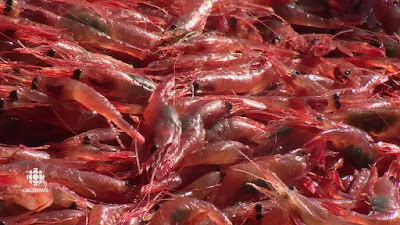SEA-NL calls on federal Fisheries Minister to reverse decision to limit increase to 2021 northern shrimp quota
 |
FOR IMMEDIATE RELEASE—Wednesday, May 26th, 2021
The Seaward Enterprises Association, Newfoundland Labrador (SEA-NL) calls on the federal Minister of Fisheries and Oceans to reverse her decision to limit the increase to the 2021 northern shrimp quota off southern Labrador and northeastern Newfoundland.
“DFO went outside its own rule book to limit the increase to this year’s quota, which will translate into the loss of more than 2,000 tonnes of shrimp to the province’s inshore fleet,” says Ryan Cleary, interim Executive Director of SEA-NL, a new association to represent the province’s more than 3,000 independent owner-operators.
“Enterprise owners are being punished for their sacrifices and Mother Nature’s turnaround. SEA-NL calls on the minster to revisit her decision.”
Cleary wrote federal Fisheries and Oceans Minister Bernadette Jordan Tuesday regarding her recent decision to institute a year-over-year limit of 15% to this year’s northern shrimp quota off southern Labrador and northeastern Newfoundland. (A copy of the letter is attached.)
The area, known as shrimp fishing area (SFA) 6, is fished mostly by the province’s inshore fleet, and is deemed to be in the “critical zone” under DFO’s precautionary approach management system.
DFO science recorded an increase in the Area 6 spawning stock of 42% between 2020 and 2021, and harvesters expected a corresponding increase in quota.
Instead, DFO set the 2021 quota for Area 6 shrimp at 9,534 tonnes, limiting the year-over-year quota increase to 15% — even though such limits to quota increases in critical zones aren’t mentioned in DFO’s Integrated Fisheries Management plan, which outlines the department’s “rules” for managing the shrimp stock.
“When those rules aren’t followed it leads to uncertainty, instability, and frustration in the fishing industry, particularly, in this case, amongst the province’s inshore shrimp fleet,” Cleary said.
“A 40 per increase in the Area 6 shrimp quota would still only result in a 10% exploitation rate, which is what DFO’s own management plan allows for when a stock is in the critical zone.”
The difference in shrimp quota between a 15%-40% increase in quota for Area 6 amounts to a 2,072 tonne (4.6 million/lb loss) to Newfoundland and Labrador’s inshore fleet, which has struggled in recent years as the result of severe quota cuts.
-30-
•••••••••••••••••••••••••••••••••••••••••••••••••••••••••••••••
Tuesday, May 25th, 2021
Bernadette Jordan
Minister of Fisheries and Oceans, Canada
House of Commons
Ottawa, Ont.,
Canada
K1A 0A6
Ms. Jordan,
I write regarding the recent decision by Fisheries and Oceans Canada to institute a year-over-year limit of 15% on increases to the total allowable catch (TAC) in Shrimp Fishing Area (SFA) 6 off southern Labrador and northeastern Newfoundland.
There is no mention in DFO’s Integrated Fisheries Management Plan (IFMP) for northern shrimp of such a year-over-year limit on quota increases when an SFA — such as Area 6 — is in the critical zone of DFO’s precautionary approach management framework.
Inshore harvesters — who fish almost exclusively in SFA 6 — request that the 2021 quota be revisited to fall in line with the more than 40% increase in the stock recorded between 2020/2021.
While the IFMP highlights that it is not a legally binding instrument that can form the basis of a legal challenge, the document does outline an understanding of the basic “rules” for the management of the shrimp stock.
When those “rules” aren’t followed it leads to uncertainty, instability, and frustration in the fishing industry, particularly, in this case, amongst the province’s inshore shrimp fleet.
The harvest decision rules (HDRs) in the IFMP clearly outline what happens when the spawning stock biomass (SSB) is in the healthy zone or above the upper stock reference (USR): “Changes in the TAC should generally not exceed 15% of the previous TAC, unless the stock is declining precipitously.”
Likewise, the HDRs also outline that when the SSB is between the limit reference point (LRP) and the USR (the so-called cautious zone): “Changes in the TAC should generally not exceed 15% of the previous TAC, unless the stock is declining precipitously.”
However, when the SSB is below the LRP (a.k.a. the critical zone) — which has been the case for a number of years in SFA 6 — the HDRs make no mention of changes in the TAC not exceeding 15% of the previous TAC.
But that’s exactly what happened with the 2021 quota in SFA 6, which has been set at 9,534 tonnes (a 15% increase from 2020) instead of a 42% increase that would have reflected the year-over-year growth in that shrimp stock.
The difference in shrimp quota between a 15%-40% increase in TAC for Area 6 amounts to 2,072 tonnes or 4.6 million/lbs to Newfoundland and Labrador’s inshore fleet, which has struggled in recent years as the result of severe quota cuts.
DFO clearly went outside its rule book in reducing the expected shrimp quota increase in SFA 6 to 15% from 40%, and inshore harvesters feel they’re being punished for their sacrifices and Mother Nature’s turnaround.
On behalf of inshore harvesters who fish in SFA 6, I respectfully request that you immediately revisit the decision to limit the quota increase to 15%.
Sincerely,
Ryan Cleary,
Executive Director (Interim)
SEA-NL
Seaward Enterprises Association, Newfoundland Labrador



Comments